A century ago, George Wesley Bellows (1882-1925) was one of America’s leading artists. He had risen quickly–from star baseball player and illustrator of the student yearbook at Ohio State University to “the apotheosis of the 100 per cent American artist.” Without waiting to graduate from OSU, Bellows set out for New York City and fell in love with his new surroundings. Bellows was not interested in following the artistic convention of the time: painting the ideal. Instead, he studied with Robert Henri and, with other artists trained by him, created the Ashcan School, to capture scenes of New York’s poor. Bellows, like the others, chose not to paint the genteel; instead, he devoted himself to realistically documenting urban scenes. When he was elected an associate of the National Academy of Design, he was the youngest artist to have been so honored. When he was just 29 years old, The Metropolitan Museum added one of his paintings to its collections. Bellows, who died tragically and much too early in life, is interred at Green-Wood Cemetery.
The first comprehensive retrospective of his work in half a century, “George Bellows,” has just opened at The Metropolitan Museum. One-third of the paintings in the exhibition are of New York City. It runs through February 18, 2013.
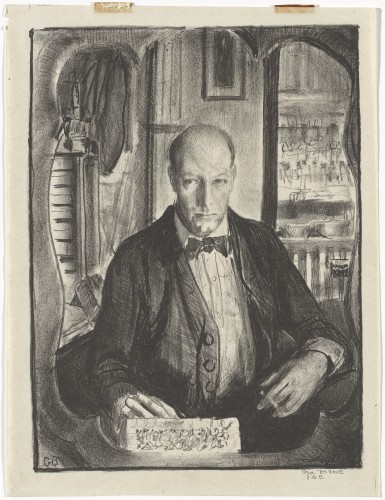
Bellows painted a variety of subjects during his much-too-short career: portraits, the Maine coast, boxers, German World War I atrocities. But his true love was what he saw all around him: the urban scenes of New York City. As he wrote, “I paint New York because I live in it and the most essential thing for me to paint is the life about me, the things I feel to-day, and that are part of the life of to-day.” Here Bellows captures a scene of boys along New York’s piers:
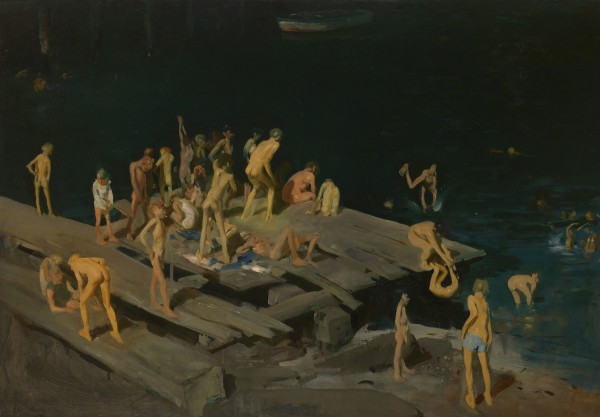
“Cliff Dwellers” freezes a New York City street scene, with attendant crowding and consequent evils resulting from a flood of immigration.
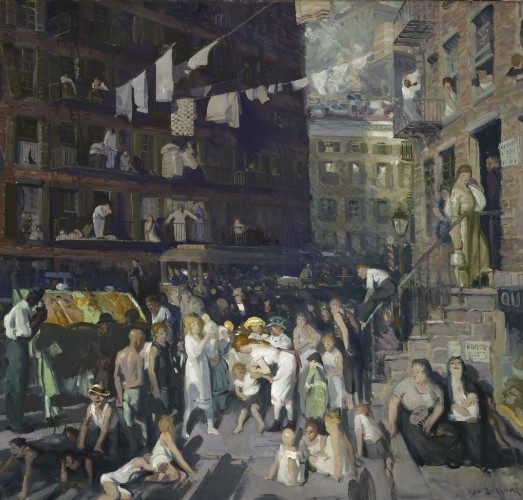
Henry McBride, critic for the New York Sun, found the scene in “Cliff Dwellers” to be “appalling” and asked,
“Can New York really be like that in summer? The dreadful people crowding the street, like naked urchins, the vendors of unhygienic lollipops, the battalion of mothers nursing their infants near the footlights where you have to see them, the street car clanging its mad way through the throng, the gentlemen on the fire escapes doing their toilets and the housewives hanging out their wash, can anything in Bedlam or Hogarth’s prints equal this? “
Many found “Cliff Dwellers,” and other paintings by Bellows, to be both truthful and powerful.
Bellows was also much-taken with New York City boxing scenes. Here is one of his greatest:
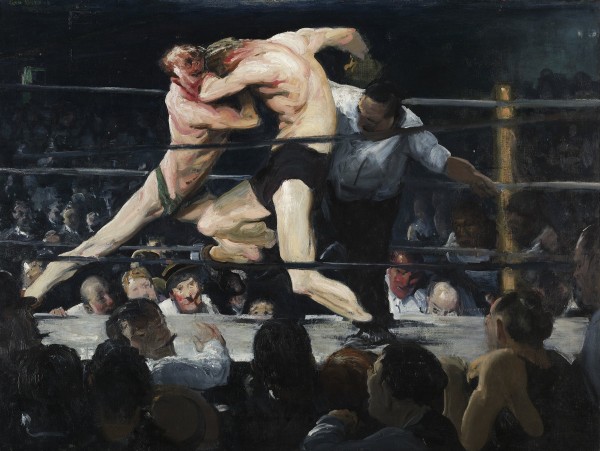
The movement and the struggle depicted in “Stag at Sharkey’s” are extraoridinary.
Bellows was also quite a portraitist. Here he depicts his wife, Emma, and their children:
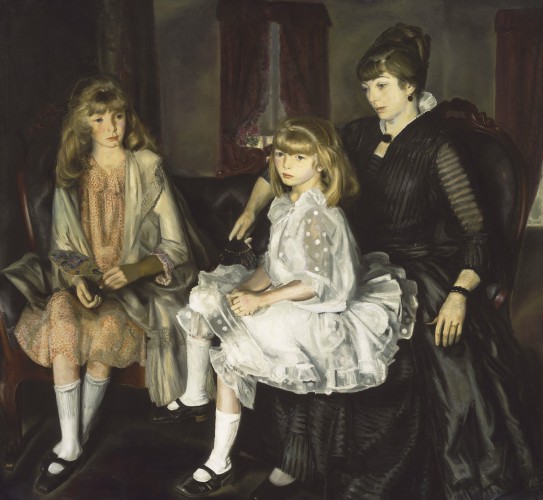
Tragically, Bellows work as an artist was cut much too short; he died of a ruptured appendix when he was only 42 years old. The New York Sun editorialized: “This country has lost one of its foremost artists and the most eminent of the younger academic painters.” The New York Times lamented, “It is a misfortune not only for his many friends but for America and art that George Bellows should have died before his work was done. . . . There is no one to fill precisely his place in his generation . . . .” Bellows was interred at Green-Wood in his in-laws lot; only a simple marble stone, with his initials, marks his final resting place.
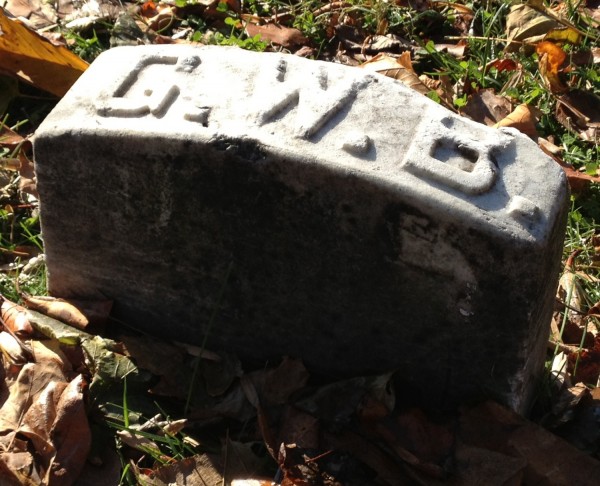
Eric Gibson, in his recent Wall Street Journal review of the exhibition, concludes that ” . . . Bellows achieved something significant, drawing on European influences to create a distinctly American art: contemporary in its subjects and gritty, even visceral, in its character.” He did indeed.
Thanks to The Metropolitan Museum for sending these images along.
Jeff, great article, as always. Any chance of a Green-Wood bus tour to the exhibit before it closes like the one last year for the Duncan Phyfe exhibit?
Thanks! Good idea–let me think about that . . .